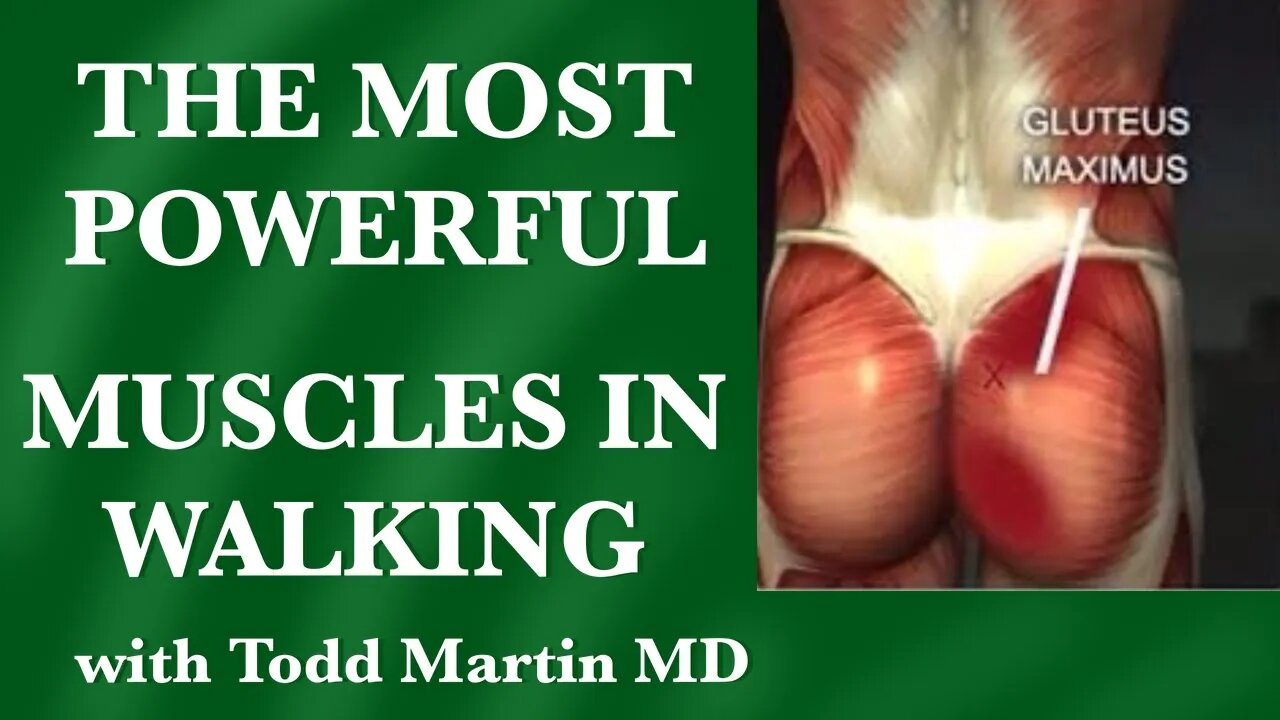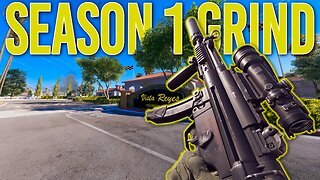Premium Only Content

The Most Powerful Muscles in Walking: Glutes vs Psoas-How to Walk Properly
The most powerful muscles in walking: Glutes vs Psoas. In this video I discuss the difference between how we use the glutes when we walk and how we use the psoas. I will focus in on the hip extensor portions of the glutes and compare them with the hip flexor psoas muscle. Both muscles are important in gait, but at different times and in different situations. It is important to understand how to use these muscles, because improper use can lead to a variety of different health conditions.
On level ground, we are not using glute extension significantly. The glutes fire eccentrically during loading response to decelerate the flexion of the forward hip that occurs after heel contact. EMG studies show the glute max stops firing after the forefoot hits the flat position. This means the glutes are not powering the swing through portion of gait. The swing through is powered by the psoas muscle, in conjunction with the other core muscles and muscles in the legs.
The glutes become significantly more active when we begin walking up a slope, even a small one. In this circumstance, the glutes are required on the rear leg to push the body forward during loading response. After the forward foot hits the flat position, we switch to psoas flexion. This pulls the lumbar spine forward, triggering the rise of the body to a standing position on one leg. This movement is aided my the knee extensors and ankle dorsiflexors. The movement pattern here is identical to the movement used during the swing through on level ground. Because of the slope, the movement results only in a standing position, not a full swing through. The glutes must then be reengaged to complete the swing through.
Link to video on The Psoas, the Most Underrated Muscle in Walking
https://youtu.be/N3srQR8fgAQ
Improper use of the glutes can lead to leaning forward and heavy heel strike. It can also result in an anterior pelvic tilt and exaggerated arch in the lower back. Improper use of the psoas muscle can result in duck foot walking and posterior tilt of the pelvis. To see the full video on psoas function, you can click on this link.
Unfortunately, I have not been able to find any existing EMG research on the use of the psoas muscle. The core muscles have largely been ignored in research on walking technique.
Visit my website: https://www.movementsphere.com/todd-martin-md
This video is part of The Walking Code by Todd Martin MD.
Get Your Walking Code Ebook
https://www.movementsphere.com/the-walking-code-book
Visit my website: https://www.movementsphere.com/todd-martin-md
Visit my website: https://www.movementsphere.com/todd-martin-md
Video Coaching now Available: Personalized coaching available with Dr. Martin. Click on the link here or in the video for details.
https://www.movementsphere.com/the-walking-code-video-coaching
Join this channel to get access to perks:
https://www.youtube.com/channel/UCAkwXF7adXLWvzaoxWydHhg/join
-
 1:31:25
1:31:25
The Charlie Kirk Show
2 hours agoTHOUGHTCRIME Ep. 104 — Post-Election Palette Cleanser + Tucker/Fuentes Interview Reaction
33.2K14 -
 LIVE
LIVE
tminnzy
1 hour agoSmooth Moves Only 💨 | Naraka: Bladepoint Chill Gameplay | !gx | !rumble
107 watching -
 1:04:33
1:04:33
BonginoReport
3 hours agoWill The LA Dodgers Dodge WH Visit?! - Nightly Scroll w/ Hayley Caronia (Ep.172) - 11/06/2025
24.2K54 -
 LIVE
LIVE
Tundra Tactical
4 hours ago $0.01 earnedDadlefield Game Night BF6 New Update Weapon Grind
181 watching -
 15:39
15:39
Megyn Kelly
4 hours agoTucker Carlson on Why He Interviewed Nick Fuentes and What He Wanted to Convey To Him
39.1K59 -
 1:14:10
1:14:10
Kim Iversen
4 hours agoZionists PANIC Over Muslim Mayor In NYC
70.8K123 -
 1:50:40
1:50:40
Redacted News
4 hours agoBREAKING! Trump Makes HUGE Announcement Trying To Save MAGA, Cost of Living & Israel CRUSHED GOP
106K204 -
 LIVE
LIVE
Dr Disrespect
10 hours ago🔴LIVE - DR DISRESPECT - ARC RAIDERS - QUEST MASTER
1,235 watching -
 2:17:37
2:17:37
The Quartering
6 hours agoFooled Again! Mamdani Backtracks Everything & Today's Breaking News!
201K125 -
 1:17:04
1:17:04
DeVory Darkins
7 hours agoPelosi SURRENDERS announces retirement and Bernie Sanders makes stunning admission
116K120